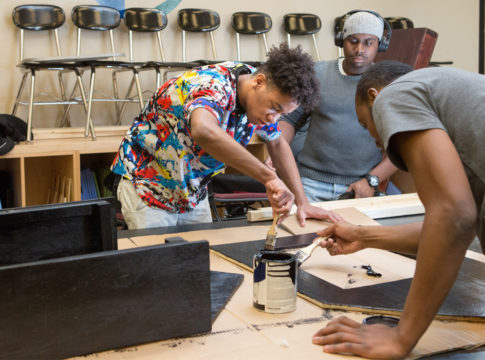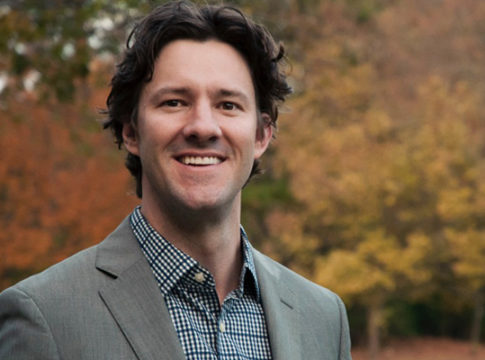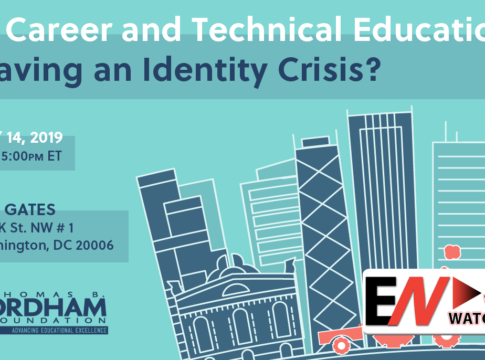
From 1910 to 1940, a grassroots effort commonly described as the high school movement led to a “spectacular educational transformation” in America, according to Harvard economists Claudia Goldin and Lawrence Katz. The movement raised enrollment of 18-year olds to 71 percent from 19 percent and graduation rates to more than 50 percent from 9 percent, lifting the US to the forefront of educational attainment in the world. It was a response to a “skills gap” problem—soaring demand for a supply of educated workers to staff new white-collar jobs.
Today, demand for a new kind of educated worker has created another “skills gap”, prompting community-fueled innovations in how high schools prepare young people for careers and continuing education. These approaches integrate schools and students with employers and work, creating a new form of social capital for young people by initiating them into relationships that expand their community networks and lifetime access to opportunity.
Here are examples from the district, charter, and private school sectors.
In 2009, Wiseburn School District in Los Angeles County created a partnership with Da Vinci Charter Schools. Today, Da Vinci serves 2,100 students in K-16 from 108 zip codes in four high schools, a K-8 homeschool-hybrid model, and post-secondary college and career programs. Over 100 business and nonprofit partners offer students internships, mentorships, workshops, boot camps, consultancies, and other programs. Student partner services include youth marketing focus groups and website, graphic, and social media design.
Da Vinci Extension integrates high school, college, work, and student services like mental health and counseling, with two pathways to further education—including associate or bachelor’s degrees—using classroom and on-line instruction. One is UCLA Extension and El Camino College, with no cost. The other is College for America, a Southern New Hampshire University affiliate, costing about $6,000 but subsidized by Pell Grants and local funding. Da Vinci provides tutoring, advising, and teacher support.
In Boston, nonprofit Match Education oversees several initiatives, including Match Public Charter School, founded in 1999 and enrolling 1,250 students in pre-K through 12 on three campuses. Match Beyond—launched in 2014—assists Match high school graduates with career placement and college completion and partners with College For America for instructional services. Match Charter School offers student coaching and other support like job counseling.
Match Beyond is now known as Duet and operates as an independent nonprofit using Match Charter School facilities for study space and staff for student coaching and mentoring. Duet students can work and pursue associate and bachelor’s degrees through Southern New Hampshire University that cost $7,000 a year. Financial aid is available. Career services are available for two years after graduation, including resume development, interview preparation, job searches, and support through the hiring process.
Cristo Rey, founded in 1996, is a network of 35 Catholic schools with more than 15,000 graduates. The network enrolls more than 12,000 students in 22 states. Forty percent of these students are not Catholic, and 98 percent are minority youth with an average family income for four of $37,000. It integrates four years of academics with work experience through its Corporate Work Study Program, a separate nonprofit. The program is an employment agency, placing students five full days a month through high school in an entry-level, professional job with over 3,400 Network corporate partners. Cristo Rey is authorized by the U.S. Department of Labor to operate the program within federal child labor laws.
Students earn 60 percent of their tuition charge through employment, with 30 percent coming from fundraising and 10 percent from a family contribution of, on average, $1,000. Families access state school voucher and tax credit programs where available.
This new high school movement exemplifies what Ryan Craig, in A New U, calls “faster and cheaper” pathways to 21st century jobs and careers, including apprenticeships and internships; career and technical education; dual enrollment in high school and post-secondary institutions; job placement and training; career academies; boot camps for acquiring discrete knowledge or skills; staffing and placement services; and new approaches to paying for these programs.
These innovations create new opportunity networks and social capital for young people, helping them integrate school and work and education and career, while preparing them to make better decisions about their future. They just may be the seeds of the nation’s next great educational transformation.
Bruno V. Manno is Senior Advisor to the Walton Family Foundation K-12 Program.





